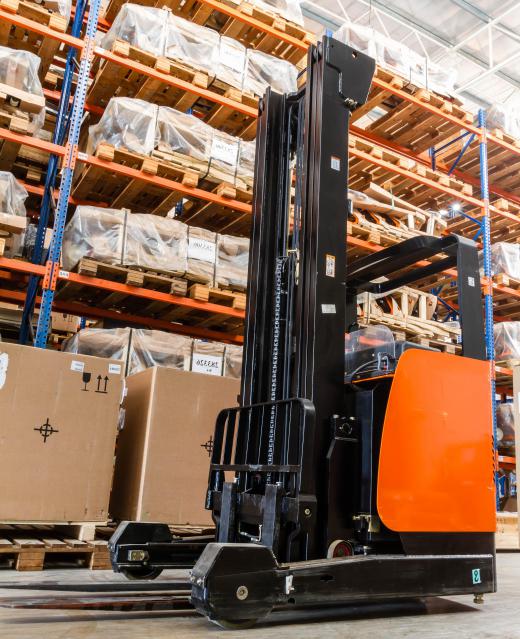Forklift dimensions are measured by calculating the length, width, and height of the entire machine. Precise values that include all parts of the forklift ensure it will fit through doorways, aisles, and other areas of a factory, warehouse, or shipping facility. The dimensions of the fork itself have to be included as well because different types of forklifts with their own configurations are sold by manufacturers. Size, along with function, is a major concern when a facility selects the appropriate forklift.
The overall length is important to know when buying a forklift. Maneuvering it through a factory is simpler and safer if the distance from the back of the machine to the front of the fork arm meets the appropriate space requirements. Forklift dimensions also include overall height, which is the distance from the ground to the truck’s highest point. Measured to the highest tip of the mast or overhead guard, the height of the machine directly affects whether it can fit through doorways. It is also important to take into account whether the tires are inflated or deflated.

A forklift’s width can vary depending on the starting and ending points of the measurement. When taken from one side to the other, the width can be measured from the tips of the truck’s axles, its fender, fork carriage, or tires. Measurements of these forklift dimensions help to pick the exact model required, and to make the most of the large investment required for a forklift.

Forklift dimensions also include a measurement of the fork itself. Fork blade thickness and the length of the blade from its attachment point to the very tip are important measurements. Other measurements include the height from the bottom of the blade to the top of the fork structure, as well as the width, angle, and cross section of the blade.
These measurements affect how the forklift will fit in a facility and how much weight it can carry. Different types of forklifts are designed to carry certain kinds of cargo. Some are designed to carry pallets and crates, others to reach boxes for product orders, and the largest forklifts are designed to transport shipping containers. It is also important to include protective elements, such as the overhead guard, in the forklift dimensions. The operator is protected by the guard, which can add height to the vehicle, making it hard to pass through doorways and other low-hanging elements.

